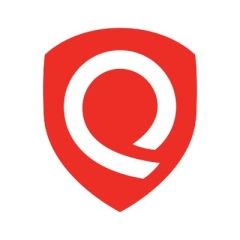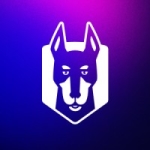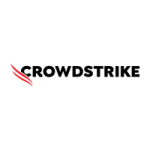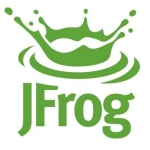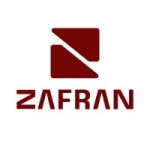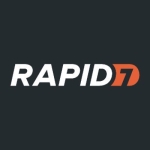What is our primary use case?
Qualys' main function is to scan IT systems. It does the scanning of computer systems.
What is most valuable?
Continuous Monitoring is excellent because it is entirely dependent on the agent, and the Agent Scan, is also quite good.
I also like the asset tagging, asset grouping features, and the dashboard, because we can customize and create our own dashboard. That's quite good.
The most recent is VMDR, which provides a comprehensive overview of how to detect, patch, and remediate specific vulnerabilities. That is also an excellent module.
What needs improvement?
The dashboard itself could be improved, while we can customize it, they can create different tabs where we can see the trending vulnerabilities, how many there are, or how many have been fixed, as in the most recent scan report, so that trend analysis is a little easier.
Aside from that, the solution itself is fairly generic in nature. What they can do is pretty much customize everything and provide a relevant solution for everything. For example, because Qualys has a Cloud Agent that scans a system's entire inventory. As a result, they can test their use cases to determine whether or not a vulnerability has been confirmed. If they can do so, they can also provide us with a straightforward solution to a specific problem rather than a generic one. That could be one area where they can improve.
Qualys does not currently have an IoT, SCADA vulnerability assessment, they can significantly improve their IoT, SCADA, and ICS (Industrial Control Systems) vulnerability assessment technique. When you compare with Tenable SC it has more features than Qualys VM.
If you see power grids, large oil stations, they fall under SCADA and Industrial Control Systems. These systems are very different from standard IT systems. Qualys currently does not have any features for scanning SCADA, IoT, and Industrial Control Systems.
I believe they can improve on the addition of devices. Assume I have two lakhs of devices that cannot all be added at the same time. For example, if I have two lakhs of devices, and two lakhs of those devices have a Cloud Agent, adding all of those devices at once is not easy. We have to add it 1,000 at a time, which takes a long time when there are two lakhs of assets to add. If we do 1,000 at a time, we'll have to do it for around two lakhs, which is quite difficult.
They can increase their frequency of working faster, similar to the time constraint they currently have. The second thing they can improve is the addition of assets. They can almost completely automate the process of adding assets, or they can increase the maximum number of assets that can be added in one go. They are only allowed to add 1,000 assets. If I want to add two lakh assets, it will be extremely difficult to do so by adding 1,000, at a time.
That is a fairly technical issue. Most of the false positives reported by Qualys or the inability to detect a cumulative patch update, if any, are the few things that they can improve and incorporate.
As I previously stated, it would be extremely beneficial if they could implement scanning, vulnerability scanning of IoT systems, Industrial Control Systems, and SCADA devices.
For how long have I used the solution?
I have been working with Qualys VM for approximately four years.
We have been using multiple Qualys modules, such as VMDR, Cloud Agent, AssetView, and Continuous Monitoring. The most recent version that we are using is 4.14.
What do I think about the stability of the solution?
It's reasonably steady. When we say stable version, there is also room for improvement in that Qualys will not be able to handle large amounts of data at once. When you do billions of scans, such as a scan for millions of devices, it becomes extremely slow, and gathering data and populating the report becomes extremely tedious.
What do I think about the scalability of the solution?
Scalability is quite good. We can pretty much rely on the tool. It is easy to scale.
If the organization grows, we can pretty much scale it to most of the areas. The only problem is that they must primarily work on Industrial Control Systems and lightweight devices such as CCTV cameras, and lightweight devices. As a result, they are required to work in that field, otherwise, it is pretty good.
Based on my previous experience, there were approximately 300 or more users using Qualys in organizations with a population of more than two lakh people. Currently, I see that approximately 400 users are using it, and the size of the organization is significantly larger than the previous one.
We use this solution daily.
How are customer service and support?
Technicals support is pretty good. Since I've been working in this, they've been friendly and straightforward, and we were able to get the most out of them.
We have suggested areas for improvement, and they have been working on them. They always make a good impression on us.
Which solution did I use previously and why did I switch?
As a consultant, I've worked on a variety of projects in a variety of organizations.
How was the initial setup?
The initial setup is simple and straightforward.
What about the implementation team?
We initially had assistance from the vendor, but once we had a good understanding of it, we scaled it in our organization.
Which other solutions did I evaluate?
Because I've been using Qualys for quite some time, I was looking for a comparison of several solutions such as Tenable SC, Rapid7, InsightVM, and Tenable Nessus. I was curious to know if there were any other tools that were better than Qualys.
I was looking for more information about Tenable SC and wanted to compare it to Qualys in more detail, with parameters such as, how the false positives are detected in Tenable SC and how good it is in comparison to Qualys. In a similar manner, in comparison to Qualys, we learn about its usability, interface, and how user-friendly it is. Those are the few things I was looking for, and I'm still looking for more information about Tenable right now.
What other advice do I have?
They have the ability to improve SCADA. SCADA stands for Supervisory Control and Data Acquisition, and IoT stands for Internet of Things scanning.
Recommending this solution would depend on the organization, the requirements, and the devices they have.
For a typical IT system, it is very good to go with this solution. Microsoft, Deloitte, and the majority of organizations still use it, it is pretty much good to go. But, once again, it is entirely dependent on how the organization is, what type of devices they have, and what kind of scans they would like to have, it is entirely dependent.
In a broad sense, it is a good solution to go with.
I would rate Qualys VM an eight out of ten.
Which deployment model are you using for this solution?
Public Cloud
If public cloud, private cloud, or hybrid cloud, which cloud provider do you use?
Microsoft Azure
Disclosure: My company does not have a business relationship with this vendor other than being a customer.

